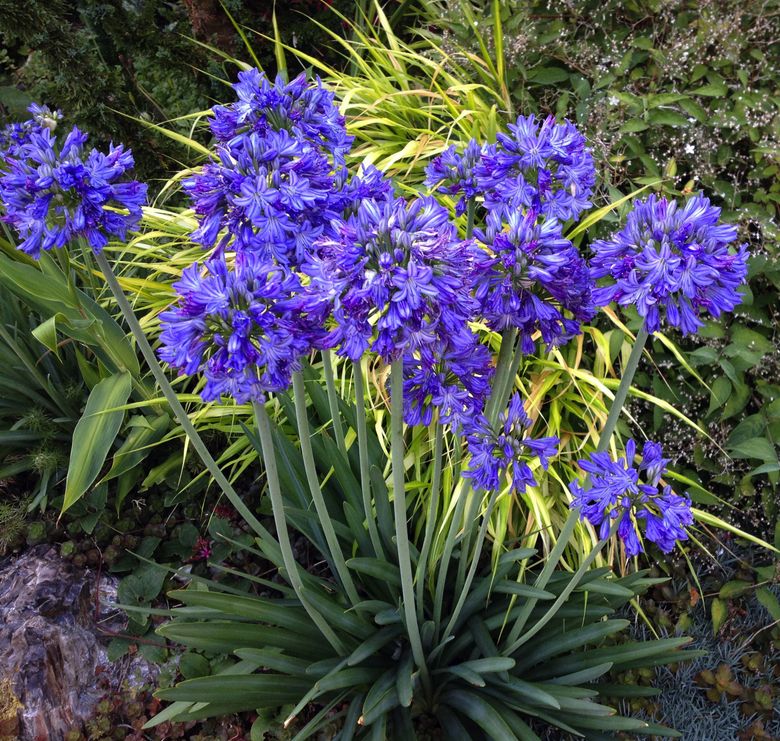Stunning Agapanthus: Enhancing Your Garden's Beauty
Stunning Agapanthus: Enhancing Your Garden's Beauty
Blog Article
Grasping the Art of Agapanthus Treatment: Crucial Actions for Healthy And Balanced Growth and Vibrant Flowers
In the world of gardening, the growing of agapanthus stands as a rewarding undertaking for those that look for to support these classy blooming plants. From selecting the right selection to grasping pruning techniques, the journey in the direction of cultivating thriving agapanthus plants is complex and holds the crucial to opening the complete possibility of these botanical gems.
:max_bytes(150000):strip_icc()/agapanthus-growing-guide-7368912_hero-a3585e4f9ffe4b99a73c7ad8eb4ebe48.jpg)
Picking the Right Agapanthus Variety

When choosing the right Agapanthus variety for your garden, take into consideration elements such as environment viability, blossom shade, and growth behavior. Agapanthus, generally known as Lily of the Nile or African lily, is available in a variety of shades varying from shades of purple and blue to white. Select a flower shade that enhances your existing yard combination to develop an unified landscape. In addition, take into consideration the climate in your region to make certain the Agapanthus selection you choose can flourish in your particular conditions. Some selections are extra tolerant of cold temperatures, while others like warmer climates. Understanding the development routine of different Agapanthus varieties is crucial for correct placement within your yard. Some ranges have a clumping growth behavior, perfect for boundaries or containers, while others have an even more dispersing nature, ideal for ground cover or mass plantings. By meticulously reviewing these aspects, you can choose the excellent Agapanthus range to enhance the beauty of your yard.
Suitable Growing Conditions
Taking into consideration the optimal environmental needs is vital for effective Agapanthus farming. Agapanthus plants are sensitive to cold temperatures and ought to be shielded from frost during winter months.
To make certain healthy growth and lively blossoms, plant Agapanthus light bulbs at a deepness of regarding 2-4 inches and area them 8-12 inches apart. Adding organic matter, such as garden compost, to the dirt can enhance drainage and fertility, advertising robust origin growth. Mulching around the base of the plants assists maintain wetness and reduces weed growth. Regular watering is essential, especially throughout the expanding period, to keep the soil consistently damp however not waterlogged.
Watering and Fertilizing Tips
Keeping proper moisture degrees and providing necessary nutrients are essential aspects in the treatment regimen for Agapanthus plants. When it comes to sprinkling Agapanthus, it is crucial to strike an equilibrium. These plants favor regularly wet soil yet are vulnerable to root rot if overwatered.
Feeding Agapanthus is essential for promoting healthy and balanced growth and respected blooms. Apply a well balanced plant food, such as a 10-10-10 formula, in the very early spring as new growth emerges. Repeat this application every 6-8 weeks throughout the expanding season. Stay clear of excessive fertilization, as it can result in rich vegetation at the expenditure of blooms. Always adhere to the supplier's guidelines for proper dilution and application methods. By adhering to these watering and fertilizing tips, you can guarantee your Agapanthus plants thrive and produce lively, long-lasting blooms.
Pruning Methods for Agapanthus
Trimming Agapanthus plants at the ideal times and with proper strategies is vital for keeping their health and promoting optimum growth and flowering. The optimal time to trim Agapanthus is in late winter months or very early spring prior to new development emerges.
Deadheading invested blossoms can also redirect the plant's power right into producing more blooms instead than setting seeds. If you desire to gather seeds for breeding, leave find out this here some flowers to dry and mature on the plant.
Keep in mind to use clean, sharp tools to make precise cuts and lower the risk of presenting diseases. Agapanthus. Routine trimming will aid maintain your Agapanthus looking healthy and neat while guaranteeing an abundant display of gorgeous blossoms
Managing Common Pests and Conditions
After guaranteeing proper pruning strategies for Agapanthus, it is vital to deal with usual parasites and conditions that can affect the health and vitality of these plants. One typical pest that impacts Agapanthus is the Agapanthus gall midge.
An additional usual issue is fungal fallen leave place, which offers as dark lesions on the fallen leaves. To avoid fungal conditions, make certain great air circulation around the plants, stay clear of overhead watering, and get rid of any infected leaves immediately. Additionally, Agapanthus plants can Clicking Here deal with root rot if they are planted in badly draining dirt. To stop this, plant Agapanthus in well-draining soil and avoid overwatering. By being alert and taking punctual activity against parasites and diseases, you can aid your Agapanthus plants prosper and generate lively blossoms.

Conclusion
To conclude, grasping the art of agapanthus treatment entails selecting the ideal range, offering perfect planting conditions, appropriate watering and fertilizing, ideal pruning strategies, and attending to usual parasites and illness. By adhering to these necessary steps, you can guarantee healthy development and lively blossoms for your agapanthus plants. Remember to get redirected here frequently check and maintain your plants to promote their general well-being and long life.
To make certain healthy and balanced development and vibrant blooms, plant Agapanthus light bulbs at a deepness of concerning 2-4 inches and area them 8-12 inches apart. By adhering to these watering and fertilizing tips, you can ensure your Agapanthus plants prosper and generate vivid, resilient blossoms.
One usual insect that affects Agapanthus is the Agapanthus gall midget. Furthermore, Agapanthus plants can experience from origin rot if they are planted in inadequately draining dirt. By complying with these vital steps, you can ensure healthy and balanced development and vibrant blooms for your agapanthus plants.
Report this page